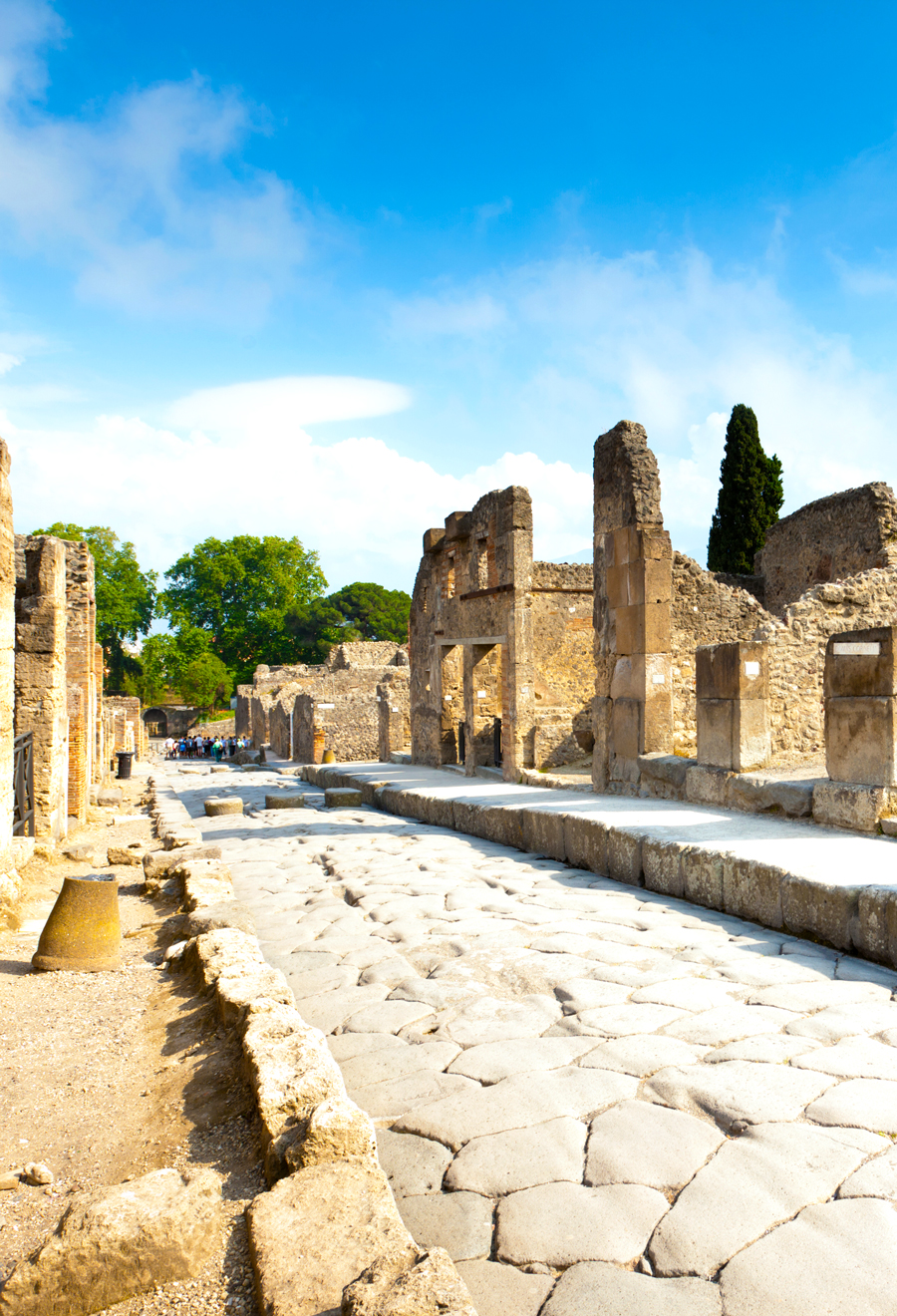At its peak, the Roman Empire spanned a vast area of nearly 2 million square miles, encompassing much of Europe as well as parts of North Africa and the Middle East. As a consequence, the Romans constructed a far-reaching network of roads in order to be able to facilitate trade and move their armies efficiently throughout the empire, which lasted for over 1,000 years and fell in 476 CE. The Romans were skilled builders, and some of the roads built during this time have stood for more than 2,000 years. In some cases, the stones on which those earliest users once walked are still visible, while others have been resurfaced so that they are suitable for use by modern vehicles. Discover five ancient Roman roads that are still in use today in one form or another.
Via Appia Antica – Italy
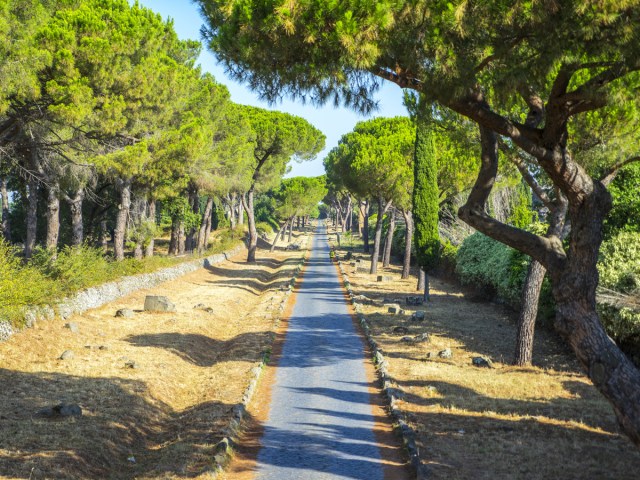
Via Appia Antica — known in English as the Appian Way — is one of the oldest Roman roads, built to connect Rome to Brindisi (then known as Brundisium) in what’s now southern Italy. The first section dates from 312 BCE, and an additional stretch was added in 244 BCE. The engineering was impressive for the time period: A base layer of heavy stone blocks was cemented together with lime mortar and topped with a smooth layer of basalt blocks that formed a durable surface. The edges of the road were also curved slightly to ensure water would run off.
These days, part of this ancient Roman road is protected and forms the Parco dell’Appia Antica — one of the largest urban parks in Europe, located in Rome. However, most of the gray setts (rectangular stones) that form the road aren’t that old. Instead, look out for larger stones such as those close to Villa Livia or Tomba di Seneca.
The Cardo Maximus – Jordan

Many of the best-preserved roads from the days of the Roman Empire now form part of archaeological sites. In Gerasa (now Jerash), Jordan, the Cardo Maximus was an important artery, the earliest part of which dates to the first century CE. It is often referred to as the Colonnaded Street because of the columns that flank it; in the past, there were around 500 of them in total.
Today, you can walk past them as you stroll from the Oval Plaza to the main Damascus Gate of the Cardo. A highlight along the way is the well-preserved ruin of the Nymphaeum fountain, where water once flowed through seven carved lions’ heads under a half-domed roof. Along the street, you’ll also see that the grooves worn by ancient chariots are still clearly visible. Be sure to look for the holes at the side of the road, as they indicate where rain once flowed into ancient sewers.
Pompeii’s Stepping Stones – Italy
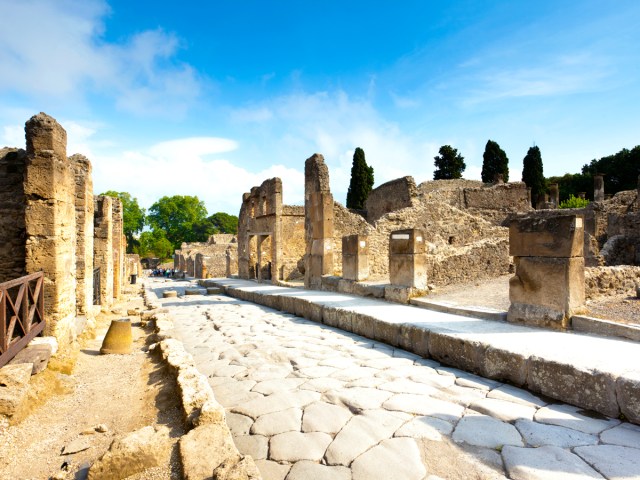
Like in Jerash, the cart ruts that you see in Pompeii’s streets are deeply entrenched and impossible to miss. Here, they have been preserved for centuries under a thick layer of ash and pyroclastic flows that blanketed the city during the 79 CE eruption of Vesuvius. Mark Twain wrote about them in his 1869 travelogue The Innocents Abroad, bemoaning the fact that “ruts five and even ten inches deep were worn into the thick flagstones by the chariot wheels of generations of swindled taxpayers.”
These days, visitors might also notice the worn stepping stones, placed across the street so pedestrians could cross without getting wet feet. Unlike in Jerash, in Pompeii there was no effective sewer system, and water would have collected in the void between its sidewalks.
Cam High Road – England
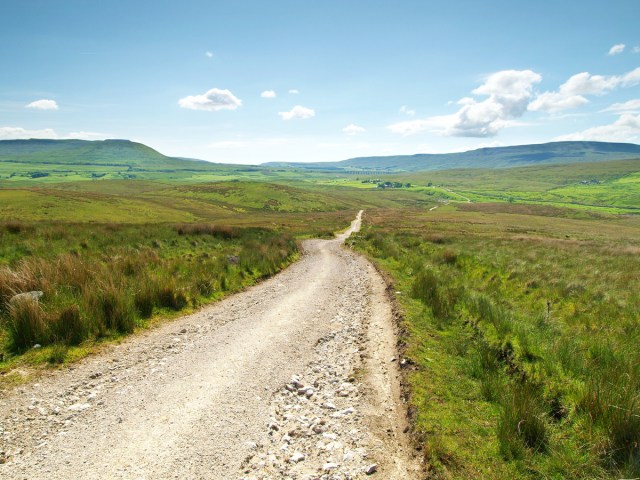
Cam High Road, located in the heart of Yorkshire Dales National Park in northern England, was built during the first century CE. Today, it’s highly unusual to see a completely straight road marked in a part of England where winding country lanes are the norm. This remote upland road is lined by dry stone walls that disguise the existence of the curved-top platform; without them, this signature feature of a Roman road would be much more obvious.
This Roman byway once linked Ingleton to Virosidum Fort, a defensive structure close to the village of Bainbridge. The fort has long been abandoned, and very little is visible today. Instead, visitors can reach the highest point on the road at 1,893 feet above sea level for the views overlooking verdant Wensleydale valley and Semer Water, a lake with glacial origins.
Puerto del Pico – Spain
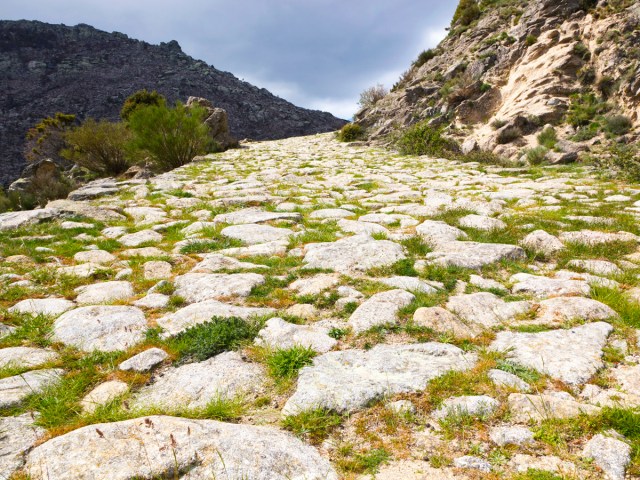
Puerto del Pico is a Roman road that dates from the second century BCE. It takes its name from a high altitude pass that cuts through the Sierra de Gredos, a mountain range in central Spain. The Romans built the road to link a fortress in Abula (now called Ávila) with roads to the south, such as those through the Tiétar Valley, and to connect with roads leading to the city of Toledo and the Extremadura region.
For centuries, the Puerto del Pico has been used as a cattle track. Transhumance, the practice of bringing livestock down from the higher pastures in winter, is still common in the area, and this road has long been used as a route for farmers to lead their cows down to more sheltered valleys. Hikers will appreciate the bucolic landscape through which this Roman road winds, especially as they leave behind stands of pines and juniper scrubland and the olive and citrus groves of the south.
More from our network
Daily Passport is part of Inbox Studio, which publishes content that uplifts, informs, and inspires.






